According to Rock Health, digital health funding still totaled $15.3 billion in 2022, despite economic challenges. This figure underscores the critical role technology continues to play in healthcare, particularly in advancing access and equity. As healthcare providers, organizations, and policymakers increasingly recognize the persistent disparities in health outcomes across different populations, technology is emerging as a powerful tool to bridge these gaps. From telehealth services to data analytics, innovations in technology are transforming the delivery of care, making it more accessible, affordable, and equitable for all, regardless of socio-economic status, geographic location, or race. In this blog, we’ll explore the pivotal role technology is playing in advancing healthcare equity and address the challenges that lie ahead.
4 Technology for Advancing Healthcare Equity
Telehealth: Expanding Access to Care

One of the most significant advancements in healthcare technology is the rise of telehealth. Telehealth involves the use of digital communication tools, such as video conferencing, mobile apps, and remote monitoring devices. These tools provide healthcare services to patients who may not have easy access to traditional in-person care. Individuals living in rural or underserved urban areas can benefit, since healthcare facilities may be sparse or difficult to reach in their location.
Telehealth reduces the need for travel, which can be a significant barrier for those with limited transportation options or those living far from healthcare providers. It also allows patients to receive care in the comfort of their own homes. Moreover, it reduces the burden on healthcare systems and enables more frequent monitoring and follow-up care.
Mobile Health (mHealth): Empowering Patients
Mobile health, or mHealth, refers to the use of mobile devices, such as smartphones and tablets, to support public health and medical practices. mHealth applications can provide patients with access to health information. It also gives patients access to appointment reminders, medication management tools, and even virtual consultations with healthcare professionals.
For populations historically marginalized or underserved, mHealth offers a way to overcome barriers. These barriers include language, literacy, and cultural differences. Furthermore, many mHealth apps are designed to be user-friendly and available in multiple languages. These tools empower individuals to take control of their health, improve their adherence to treatment plans, and make informed decisions about their care.
By leveraging the ubiquity of mobile devices, mHealth has the potential to reach individuals who might otherwise be excluded from the healthcare system.
Artificial Intelligence and Machine Learning: Addressing Bias and Disparities

Artificial intelligence (AI) and machine learning (ML) are advancing healthcare equity by providing more accurate diagnoses. They can predict patient outcomes and personalize treatment plans. These technologies also hold the potential to address healthcare disparities by identifying and mitigating biases that contribute to inequities in care.
AI and ML can analyze vast amounts of data to uncover patterns and trends that may not be immediately apparent to human providers. For example, algorithms can be used to identify patients who are at high risk of developing chronic conditions. They can identify the risks of diabetes or heart disease based on demographic factors, medical history, and social determinants of health. By proactively targeting these high-risk populations with preventive interventions, healthcare providers can reduce disparities in health outcomes.
However, it’s essential to recognize that AI and ML are not immune to bias. If these technologies are trained on biased data, they can perpetuate or even exacerbate existing inequities. Therefore, it is crucial to ensure that AI and ML models are developed with diversity and equity in mind. This includes using diverse datasets, involving experts in health equity during the development process. Furthermore, it’s also important to continuously monitor algorithms for unintended biases.
Data Analytics: Informing Equity-Driven Decision Making
Data analytics is another powerful tool in the quest for advancing healthcare equity. By collecting and analyzing data on health outcomes, access to care, and social determinants of health, healthcare organizations can identify disparities and tailor their interventions to address them effectively.
For example, data analytics can reveal gaps in care for specific populations. It can show racial or ethnic minorities, low-income individuals, or those with limited English proficiency. Armed with this information, healthcare providers can design targeted programs to improve access and outcomes for these groups. This might include community outreach initiatives, culturally competent care models, or partnerships with local organizations to address social determinants of health.
Moreover, data analytics can be used to track the impact of these interventions over time. It allows organizations to measure their progress toward equity goals. Therefore, they can make data-driven adjustments as needed. By using data to inform decision-making, healthcare providers can ensure that their efforts to promote equity are both effective and sustainable.
Challenges and Considerations in Advancing Healthcare Equity with Technology
While technology offers immense potential for advancing healthcare equity, it is not without its challenges. One of the primary concerns is the digital divide. This is the gap between those who have access to technology and those who do not. This divide is often along socioeconomic lines. Low-income individuals, older adults, and rural residents are less likely to have access to the internet, smartphones, or computers.
To fully realize the benefits of healthcare technology, it is essential to address these disparities in access. This may involve investing in infrastructure to expand broadband access in underserved areas. Additionally, low-cost devices can also be provided to patients in need. Lastly, patients will also need digital literacy training to ensure that everyone can benefit from these technological advancements.
Another challenge is ensuring the privacy and security of patient data. This is particularly for vulnerable populations who may be at greater risk of data breaches or misuse. Healthcare providers must implement robust cybersecurity measures and educate patients on how to protect their personal information.
Finally, it is crucial to approach the integration of technology in healthcare with a focus on equity. This means involving diverse stakeholders in the development and implementation of technological solutions. Stakeholders must also continuously evaluate the impact of these solutions on different populations and stay vigilant against the potential for bias in AI and ML models.
Conclusion
Technology has the potential to be a powerful force for advancing healthcare equity. However, its success also depends on how it is implemented and used. Telehealth, mHealth, AI, ML, and data analytics offer promising solutions to some of the most pressing disparities in healthcare. To ensure that these technologies truly promote equity, healthcare providers and policymakers must address the digital divide. They must protect patient privacy and prioritize equity in all aspects of technological innovation.
By leveraging technology thoughtfully and inclusively, we can create a more equitable healthcare system where everyone has the opportunity to achieve optimal health, regardless of their background or circumstances.
Lead the way in advancing healthcare equity through innovative technology! Partner with American Medical Compliance (AMC) and empower your team with our top-tier, fully customized compliance training courses—completely free for teams of 100 or more. Let’s work together to enhance your organization’s compliance, minimize risk, and ensure exceptional patient care through specialized, tailored education designed to meet your unique needs. Click here to get started.



